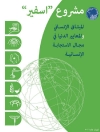Drawing on insights from international organization and securitization theory, the author investigates the World Health Organization and how its approach to global health security has changed and adapted since its creation in 1948. He also examines the organization’s prospects for managing global health security now and into the future.
Cuprins
Introduction 1. The Legal Basis For The WHO’s Global Health Security Mandate And Authority 2. The WHO’s Classical Approach To Disease Eradication 3. Securitization And SARS: A New Framing? 4. New Powers For A New Age? Revising And Updating The IHR 5. Pandemic Influenza: ‘The Most Feared Security Threat’ 6. Global Health Security And Its Discontents Concluding Remarks
Despre autor
Adam Kamradt-Scott is Senior Lecturer in International Security Studies at the Centre for International Security Studies, University of Sydney, Australia. He is also the Humanities Precinct Leader for the Marie Bashir Institute for Infectious Diseases and Biosecurity. Before joining academia, Adam previously worked as a health professional, political adviser, and government official.












